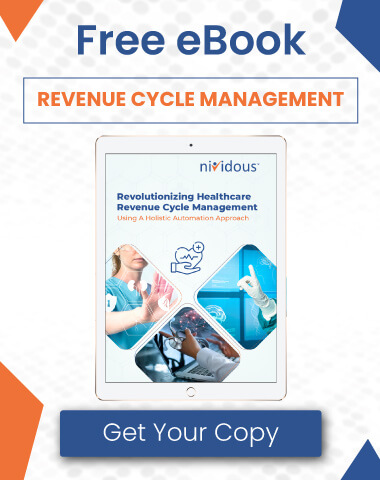Prior authorization isn’t just a burden for healthcare providers—data indicates that patients actually bear the brunt of outdated systems.
According to the American Medical Association, 34% of physicians report that prior authorization (PA) has led to a serious event threatening the health of a patient in their care, including hospitalizations, disabilities, and even death.
Further, 93% of physicians report delays in care associated with PAs, and 82% report abandoned treatment. The urgency for automated prior authorization is clear:
Not only can improvements to current systems contribute to better patient outcomes, but they also save medical providers time, money, and hassle.
The same report revealed that physicians and their staff spend almost two business days per week completing an average of 41 PAs, the majority of which are handled over the phone. The PA process is clearly overdue for improvement and innovation.
Let’s dig deeper into the case for automating prior authorization, as well as details on how automation works for PAs and how model providers are already streamlining prior authorization using automation.
Why Automate Prior Authorization In Healthcare?
Simply put, prior authorization is the process a healthcare provider undertakes to verify that services and treatments are covered by a patient’s insurance before they are administered.
In many cases, PA is a money-saving measure for health insurance providers, and employers often choose plans with more PAs to reduce healthcare costs. This to say, prior authorization is a routine part of patient care and won’t likely disappear anytime soon.
Prior authorization is commonly a manual, time-consuming process involving multiple steps. Healthcare providers must:
- Determine if a service or treatment requires preauthorization
- Ascertain who manages the benefit and locate patient plan data
- Discern how to submit patient data (no two insurance companies use the same system)
- Accurately relay patient and service/treatment data
- Wait for a response from the insurance company and provide any follow-up data
- Communicate prior authorization results
- Reattempt failed authorizations
For both medical services and prescriptions, physicians report using the phone most often for PA. In the case of services, fax is the next preferred method; for prescriptions, fax is the third most-used option.
What does all this mean for the human workers managing these processes? Phone calls can lead to extended wait times, dropped calls, and miscommunication resulting in errors and delays.
Sadly, in some cases, the insurance companies on the line do have electronic portals, but because these are so difficult to navigate, it’s faster for providers to call.
Fax machines can also return busy signals and generally transfer data more slowly and inefficiently than digital systems, a challenge made exceedingly clear by extra strain the pandemic has laid on the medical system.
Looking for ways to improve prior authorization at your healthcare facility?
Experience the Nividous automation platform with a free, personalized demo.
Manual Prior Authorization Challenges For Healthcare Providers
- Excessively Time-Consuming: Healthcare providers grapple with copious time spent on the prior authorization process, diverting valuable staff resources from patient care. Streamlining this aspect is crucial to ensure efficient operations and enhanced patient care.
- Manual Workflow Inefficiencies: Manual prior authorization workflows are error-prone, exhaustive, and inherently inefficient. These labor-intensive processes are susceptible to mistakes, leading to delays, denials, and added administrative burdens for healthcare staff.
- Disparate Insurance Systems: Disparate insurance systems, often legacy ones, compound the challenge. These systems frequently demand data in various formats, complicating the already intricate process and necessitating a standardized, integrated approach.
- Patient Care Delays: Lengthy wait times for authorization approvals and frequent rejections can significantly hinder patient care. Timely access to necessary medical treatments is essential for positive health outcomes and patient satisfaction.
- Lack of Clarity: The lack of clarity and transparency around patient insurance benefits creates confusion and frustration for patients and healthcare providers. Clear communication of coverage details is vital to ensure patients receive the appropriate care without unexpected financial burdens.
While automation can’t improve insurance portals or simplify PA requirements, it can help providers navigate complex, manual processes with greater speed and efficiency.
Providers may resist updating their PA process for a variety of reasons; perhaps the majority of their patients use one of a few major insurers for which prior authorization workflows are well-established. Still, this doesn’t mean those processes couldn’t be faster, or that serving patients with other insurances should be as challenging as it is.
The bottom line is that updating the prior authorization process will provide value well beyond the initial investment.
How Automated Prior Authorization Works
The PA process is a prime candidate for robotic process automation (RPA), as well as intelligent automation. RPA bots are trainable, rules-based software entities that can interact with systems through user interfaces to extract and review data.
Since these bots can be trained to recognize specific data types wherever they’re stored, healthcare professionals can utilize bots to identify and extract patient insurance data for example, or check this data against an insurer system to complete prior authorization.
RPA bots don’t require custom software development, making them quicker, more nimble, and less expensive to deploy than other potential solutions for PA.
Intelligent automation layers RPA with technologies like AI to leverage Optical Character Recognition (OCR), Natural Language Processing (NLP), computer vision, and machine learning. Using these tools allows RPA bots to identify and copy the right information, even among a range of forms.
Automation is also compatible with PA aggregator systems that allow providers to check benefits for a cluster of health insurance companies using a single system. An RPA bot can easily be trained to perform the same operations a human worker would with greater speed and fewer errors.
There is also no aggregator on the market that includes every insurance company a patient could potentially use, so even with an aggregator, the PA process still requires navigation through multiple systems—systems that lend themselves to data extraction and review using automation.
In this scenario, a provider could train a smart bot to interact with both the aggregator system and every other insurance company the provider accepts to speed up prior authorization.
Success Stories: How Two Providers Streamlined Prior Authorization
The desire to enhance patient experience (with the added benefit of reduced operational costs) is a powerful incentive for automated prior authorization. For providers wondering how to speed up prior authorization, consider the following examples.
Saving Valuable Time On Prior Authorizations
To accommodate over 500 patients daily, an eyecare group with more than 120 optometry stores in the U.S. previously relied on staff to preauthorize insurance among 40+ carriers.
In an arduous, error-prone process, team members manually extracted individual eligibility details from multiple legacy applications—and repeated the process for every visit even in the case of returning patients, given continuous updates to covered benefits.
Using the Nividous Platform, they deployed bots to complete the full process:
- Locating patient information in legacy systems
- Running a rule-based search query on the insurance carrier websites
- Downloading eligibility details in required formats
- Updating an internal portal
- Communicating exceptions
- Sharing details with patients
As a result, the group saved 1,500 staff hours per month and improved data accuracy by 100%.
Streamlining Insurance Processes End-to-end
A leading specialty healthcare company focused on oncology and cardiovascular care was looking to provide a better patient experience by improving back-office workflows. Specifically, the company wanted to streamline prior authorization and claim submissions, a process that required more than ten employees to extract, review, and submit patient data.
The PA and insurance claims process meant workers had to manage a range of document types (sent and received) in various formats, including fax and scan; this resulted in errors, claim rejections, and a sizable PA backlog.
Using Nividous Bots with cognitive capabilities, the company was able to automate prior authorization and claim processing in just two weeks, reducing manual work by 80% and decreasing operational costs by 45%.
Benefits Of Automating Prior Authorization With Intelligent Automation
Automating the prior authorization process with intelligent automation offers healthcare providers numerous advantages. For instance, manual handling of high-risk authorizations takes eight to ten days, whereas intelligent automation can accomplish it in just four to five days.
It's possible to further reduce this timeframe to a mere 24-48 hours or even obtain instantaneous authorizations for high-risk procedures and medications in fully automated systems. Let's look at some key benefits:
- Efficiency: Automation accelerates the prior authorization workflow, reducing the resources and effort required for manual processing.
- Error Reduction: Automated systems minimize data entry errors, leading to fewer authorization denials and resubmissions.
- Cost Savings: Reduced administrative overhead lowers operational costs, benefiting the healthcare provider's bottom line.
- Enhanced Patient Care: Quicker authorization approvals lead to faster access to necessary treatments, improving patient satisfaction and outcomes.
- Compliance: Intelligent automation ensures adherence to payer guidelines and regulatory requirements, reducing non-compliance risk.
- Seamless Integration: Automated systems can seamlessly integrate with electronic health records (EHR) and other healthcare systems for a more streamlined workflow.
- Real-time Tracking: Providers can track authorization requests, approvals, and rejections in real time, aiding reporting and process optimization.
- Scalability: Automation easily scales to handle varying volumes of authorization requests, accommodating providers of all sizes.
- Accelerated Revenue Cycle: Faster authorization approvals expedite billing and reimbursement, positively impacting the provider's revenue cycle.
Modernizing Revenue Cycle With Intelligent Automation
With limited resources and increasing complexity in the revenue cycle, the shortcomings of relying on paper-based and manual processes are becoming all too apparent.
Hospitals and clinics that have already embraced automation have also started to adopt Intelligent Automation (IA), which combines more advanced forms of automation, including Artificial Intelligence and Intelligent Document Processing, to automate all possible operations in their front and back offices.
Approximately half of the US healthcare providers are already in the early stages of implementing automation within their revenue cycle workflows, and we anticipate this number to grow significantly.
Want to Supercharge Your Revenue Cycle Management?
Watch this on-demand webinar to discover how Intelligent Automation can help improve coding accuracy, streamline clinical documentation, and effectively manage compliance risks.
Ready to put intelligent automation into practice?
The power of intelligent automation is spurring increasing adoption across the healthcare sector, for a range of processes including PA. If you’re interested in freeing up valuable staff time and optimizing patient care, it’s time to explore Nividous.
Our expert team has a strong history of partnering with health care organizations of all sizes to help them focus more resources on what matters most—the long-term health and wellbeing of those they serve. Reach out today to learn more and get started.
Ready to explore digital automation for prior authorization?
Get a trained automation bot in less than a month, at no risk, with Nividous Quick Start Program.





![The Path Forward for Intelligent Automation [2024 Trends] Blog Feature](https://nividous.com/wp-content/uploads/2024/05/The-Path-Forward-for-Intelligent-Automation-blog-feature-1.webp)